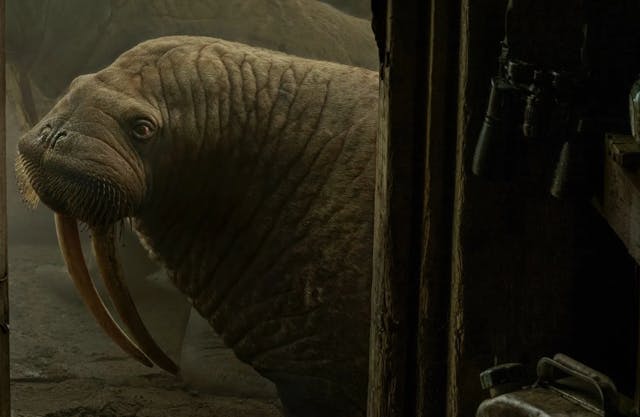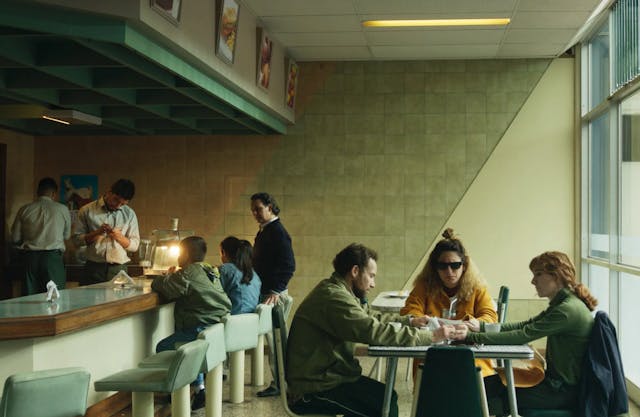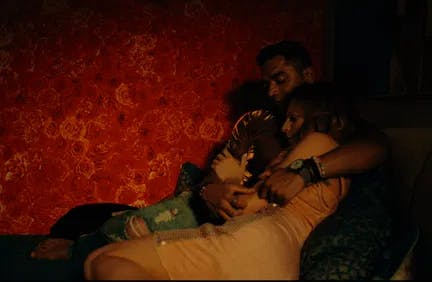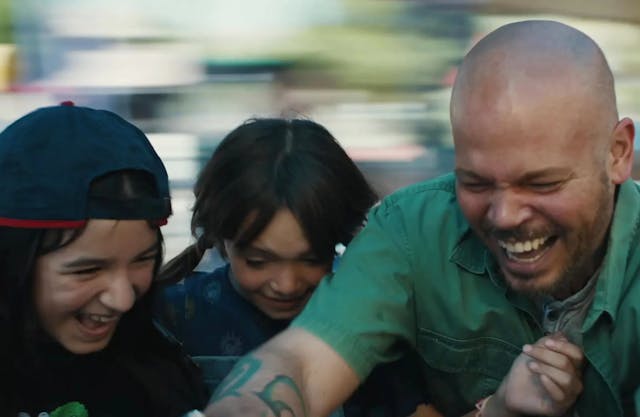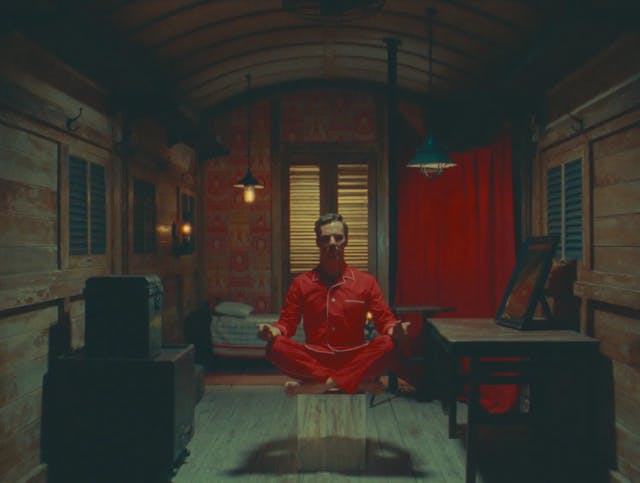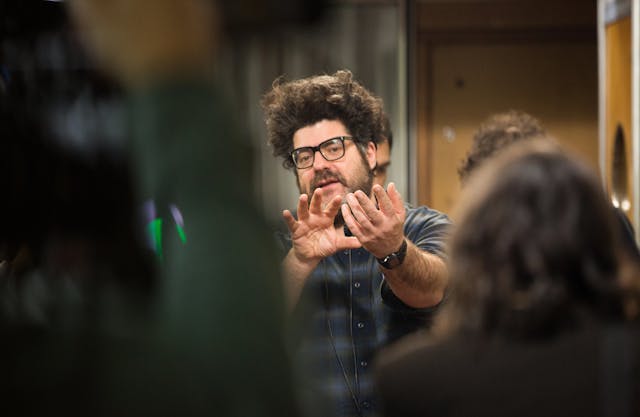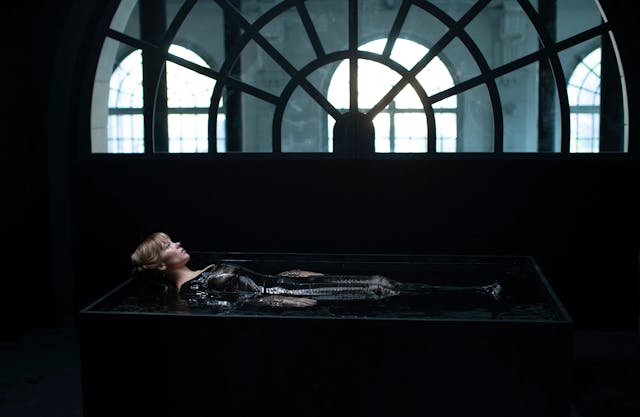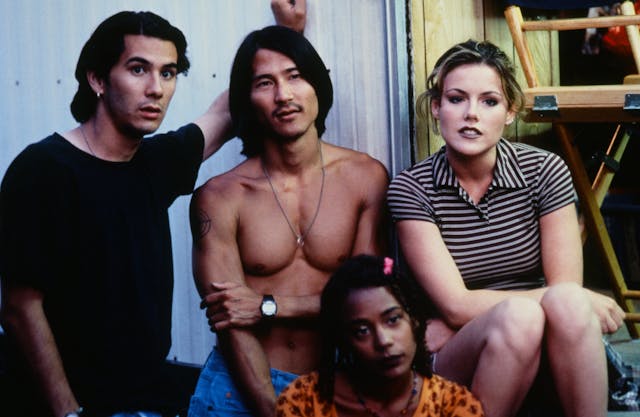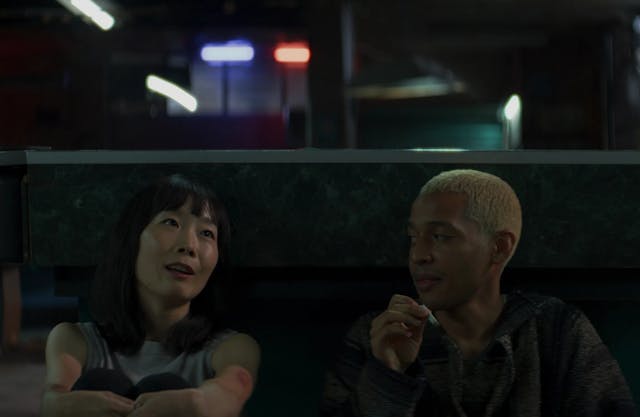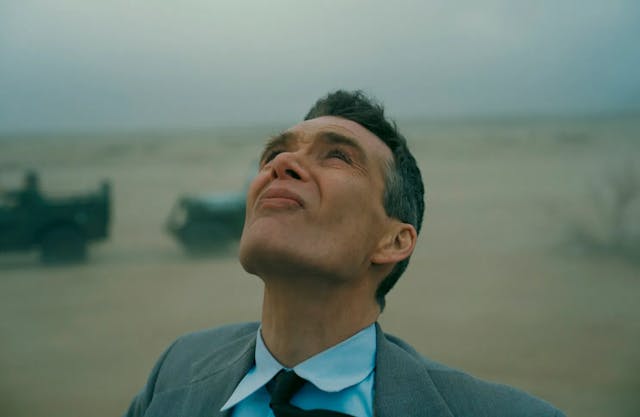Tribeca 2024: "Don't You Let Me Go" Embraces You as it Confronts Loss

The Tribeca Film Festival snatched the premiere of a true rarity: a Uruguayan movie directed by two women. Ana Guevara and Leticia Jorge wrote and directed “Don’t You Let Me Go." They tackle a universal subject with such clear-eyed empathy that it is bound to overcome any cultural barrier separating the viewer from the film.
The movie begins in a modern funeral home. It could have been an office or a hotel if we were to go by the sterile ambiance built with glass, steel, and neutral carpeting. We are here to send off Elena (Victoria Jorge), a striking woman who smiles slyly in a picture laid on top of her coffin. Bereaved friends and family arrive one by one. Her husband is shellshocked, her mother too preoccupied with getting the personnel to get rid of a large crucifix overseeing the mortuary room - “We are not religious!” -. The most visible displays of emotion come from her childhood friends, ganging up in a corner. Adela (Chiara Hourcade) cooly watches everybody. Luci (Eva Dans) is not above sharing snarky asides, and Malena (Florencia Colucci) can barely move to carry the weight of a voluminous pregnancy.
The first chapter takes place in an impersonal funeral compound. - poetic epigrams and illustrations on-screen mark this literary conceit -. It is one of the most striking dramatizations of grief since the opening scenes of the TV series “Twin Peaks” (David Lynch, 1990). Walls of glass and beams of wood and steel separate the characters occasionally, hinting at their most personal level of despair. They are together and alone. This contradiction mirrors the schizophrenic altered state provoked by the death of those we love. We cry in hopelessness, then laugh at a warm memory. A picture rests on the coffin, where Elena regals us with an enigmatic smile - more echoes of Laura Palmer -.

The sands of time: Hourcade and Jorge triumph over death in "Don't You Let Me Go." / Photo by Soledad Rodriguez, courtesy of CInema Tropical.
The surviving women display the warm camaraderie of childhood friends, carrying their pet names well into middle age. They refer to each other by the first one of two syllables of their names. Good-natured cattiness comes to light when they suspiciously glance at a group of Elena's friends from later stages of life - “That woman in green is from College, right?” says Luci. “Ade” and “Ele” were probably the closest. That much we gather from a voiceover shared by an unseen narrator - adding another patina of literate whimsy to the proceedings. Ade holds it together throughout the proceedings, but once alone in her car, emotions pour out to the point of meltdown. The pain sends her into a fugue state, a reverie that fills the rest of the movie.
The filmmakers do not betray the realism of their approach with special effects or fancy camera moves. Adela steps out of her car and boards a public transportation bus. The only sign of the uncanny is the fast switch of destinations on the electronic board on the top, culminating in the name “Solis.” We eventually find out Solis is a small seaside town where the friends spent a few days before Ele’s marriage. Off the bus and wearing different clothes - the clearest sign that something is different - Adela heads toward a shabby but cozy country house where her dead friend awaits. Alive.
In “Peggy Sue Got Married” (Francis Ford Coppola, 1986), Kathleen Turner plays a disenchanted divorcee who magically returns to her teen years. She goes armed with all the knowledge decades of experience grants. Crucially, she is aware of being in the throes of time-traveling shenanigans. Ade and Ele are not in a flashback but in something more vaporous and elusive. Sometimes, they seem aware of the fantastic circumstances but do not break the spell with something as vulgar as verbal recognition. Occasionally, A branch of Baby Breath flowers Ade picked up from the top of the coffin appears as a memento mori, a touchstone that reminds us what is happening is not for real.

Country idyll: Jorge, Dans, and Hourcade enjoy Rohmeresque shenanigans in "Don't You Let Me Go." / Photo by Soledad Rodriguez, courtesy of Cinema Tropical.
Fittingly, Ade faces signs of the uncanny with nonchalance - pebbles on the beach, painted like eyeballs, blink to her as the tide rolls in. At another moment, she turns over her shoe, and a stream of sand keeps falling way beyond what physics allows. These low-fi, artisanal special effects follow the down-to-earth aesthetics of the movie. The cold realism of the urban space segues smoothly into an earthbound naturalistic style that can bring to mind Eric Rohmer's “Tales of the Four Seasons” and the country-bound episodes of his “Comedies and Proverbs.”
How far in the past are we? You may struggle to find the bearings of time, but the filmmakers are adamant about not giving clear information. The uncertainty gives the proceedings a vaporous, dreamlike quality. The players are young adults veering towards middle age, but their physical language speaks of youth. Soon, Luci joins them with her son, baby Paquito, in tow. The trio engages in low-stakes adventures: one goes on a beer run with an unknown motorist, and they recruit the help of a passerby to shoo away a possible home invader. Alas, there is no overt drama in these episodes. They have the same tension as the scenes where they dance and smoke to punk music on the radio. “Don’t You Let Me Go” goes from being a study of grief to a warm, inviting hang-out movie.

Friendly persuasion: Hourcade, Dans, and Jorge hold on to each other in "Don't You Let Me Go." / Photo by Soledad Gutierrez, courtesy of Cinema Tropical.
The writer-director team creates this fragile, liminal state. Ade and Ele seem to share the knowledge that recognizing something as vulgar as death has no place in the place where they miraculously find themselves. They live in the moment and cherish each other's presence. Isn’t that the only thing we can do when facing mortality?
Following suit, the cast commits to naturalistic, inviting performances. Hourcade shoulders the heavier weight, navigating the gamut from despondency to elation. Her Ade is in almost every scene and anchors us in realness, even when we follow her into a flight of fancy. Victoria Jorge’s Ele is an earthy sprite of warmth. Way too many movies fall short when they push forward an allegedly enchanting character, but Ele is just that. She is physically beautiful but unassuming - at times, she may remind you of a young Jessica Chasten -. The more we spend time in her company, the more we grasp the grief the friends feel. Luckily, they - and we, contemplating our losses in the real world - can find comfort in remembrance.
Want to get an email when we publish new content?
Subscribe today